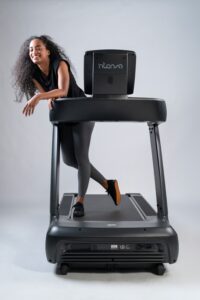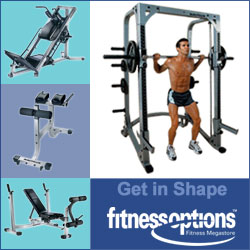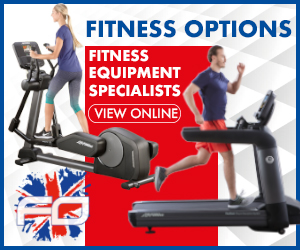
Why Choose a Treadmill Over Outdoor Running?
For those who prefer to work out at home, treadmills for home has a few key benefits over running outdoors. When you run on a treadmill, you don’t have to worry about the weather, your safety, or the terrain. This means you can keep up with your training schedule without any interruptions. Plus, you can set your treadmill to the exact speed and incline you want, so you can repeat the same workout and track your progress more accurately than you can when running outside, where the wind, temperature, and route can change.
Quality treadmills have cushioned decks that can significantly reduce impact compared to concrete or asphalt surfaces. This cushioning could lessen the overall stress on your joints. Furthermore, the ability to adjust the incline precisely allows for targeted training adjustments. This would need specific hill locations when running outside.
That being said, running on a treadmill does alter your biomechanics a bit compared to running outside. Studies show that some people have less posterior chain engagement and altered stride patterns. The moving belt helps with leg turnover, making running on a treadmill at the same speed a bit easier than running outside. This is something to keep in mind when comparing performance metrics.
Impact Profile: The Impact of Running on Your Joints
Running can be hard on your joints, with each foot strike generating forces equivalent to 2-3 times your body weight. This is why running has a higher risk of injury than rowing or cycling. It is especially risky for those who already have joint problems or are heavier. Running involves around 1,000 foot strikes per mile. This can put a lot of stress on your ankles, knees, hips, and lower back.
Using good running shoes, the right treadmill padding, and slowly increasing your running duration can help reduce the risk of injury. Lots of people find they can handle the impact of running by mixing it with less intense exercises like rowing or cycling. This balanced workout routine helps to avoid doing too many high impact exercises in a row.
Calories Burned: 600-1000 Calories Per Hour
Running usually provides the greatest calorie burn of all the popular cardio exercises. Most people will burn between 600-1000 calories per hour, depending on their weight, speed, and incline. The reason running burns so many calories is that with each step, you have to overcome gravity. This puts a lot of demand on both your cardiovascular system and your muscles. Consequently, this leads to a high calorie burn.
With treadmills for home , you can easily adjust the speed and incline to change the intensity of your workout. This makes them great for interval training routines. Such routines not only burn a lot of calories during the workout but also increase your calorie burn for hours after the workout. This is known as excess post exercise oxygen consumption (EPOC).
How Much Space Does a Treadmill Need?
When it comes to cardio machines, treadmills generally take up the most space. A good quality treadmill will need about 7 feet by 3 feet of floor space, plus some extra room around it for safety. While some treadmills can be partially folded up when not in use, they don’t fold up as small as rowing machines do.
When it comes to noise, treadmills are the worst offenders. The sound of the motor and the impact of your feet hitting the belt are louder than the noise made by rowing machines or stationary bikes. Even though high end models have features to reduce noise, treadmills can still cause problems if you live in an apartment. In particular, this is an issue where you need to keep the noise down.
Cycling: Gentle on the Joints, Tough on the Heart
Cycling is an excellent way to get your heart pumping and your legs strong without putting too much strain on your joints. Exercise bikes allow you to control the resistance, so you can switch between longer, lower intensity workouts and shorter, higher intensity ones. There’s a wide range of indoor cycling equipment available. This ranges from simple spin bikes to high tech smart trainers that can be used with virtual cycling programs like Zwift or Peloton.
When you’re cycling, you’re seated, which makes for a supported workout environment. This is especially good for people who have balance concerns, are carrying extra weight, or have certain joint limitations. This makes cycling one of the most sustainable long term cardio options for people of all fitness levels and ages.
Indoor Bikes: From Basic Spinners to Smart Trainers
There are many different types of exercise bikes, each offering unique advantages. Upright bikes most closely mimic outdoor riding positions, engaging core muscles for stabilization while targeting quadriceps, hamstrings, and glutes. Recumbent bikes feature chair-like seats with back support, reducing upper body engagement. Thus, creating an exceptionally joint-friendly option for rehabilitation or those with back concerns.
High tech bikes are the latest in indoor cycling. They feature electronically managed resistance, power meters, and connectivity features that sync with training apps and virtual worlds. These advanced features turn solo indoor cycling into immersive, community connected experiences that significantly increase sticking rates and workout enjoyment.
Lower Body Focus: Muscle Development During Cycling
When you cycle, you primarily work your quadriceps, hamstrings, glutes, and calves through a continuous circular motion. Unlike the impact driven muscle activation of running or the full body engagement of rowing, cycling provides a concentrated lower body workout. This is achieved through high repetition resistance training. This is why dedicated cyclists often have very defined leg muscles, even if their upper bodies are relatively lean.
How much you engage your muscles during cycling can change a lot. It depends on things like your resistance settings, your riding position, and your technique. If you do standing climbs, you’ll engage your glutes and your core more than if you’re riding flat while seated. High cadence spinning is better for muscular endurance than for strength development. Because of this, cyclists can target specific adaptations by changing these variables.
Calorie Burn Range: 400-700 Calories Per Hour
Indoor cycling usually burns about 400-700 calories per hour for most people. This is a bit less than rowing or running in terms of how much energy you use. However, because cycling is low-impact, you can often do it for longer and more often. This could mean you burn more calories over a week, even though you burn fewer calories per minute.
Skilled cyclists can significantly boost their energy output through high intensity interval training or sustained efforts at their anaerobic threshold. This pushes their calorie burn to the higher end of the scale. The exact mechanical efficiency measurements offered on many smart bikes also provide precise calorie tracking. This removes the uncertainty that often comes with estimating energy expenditure.
Compact Choices for Limited Living Spaces
Among the main types of cardio equipment, exercise bikes generally have the smallest footprint when in use. They take up about 4 feet by 2 feet of floor space. This makes bikes a great choice for apartments or multi-use rooms. It’s important to make the most of the available space. Many of today’s models also have wheels for transport, so you can easily move them out of the way when you’re not using them.
Though classic stationary bikes have a set size, the market has seen the introduction of several clever folding models designed for smaller spaces. These foldable options can cut their size in half when stored. However, they usually have fewer features than non-folding models.






